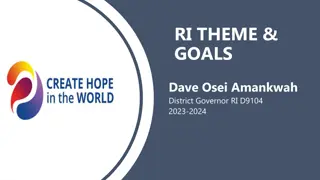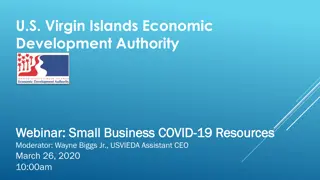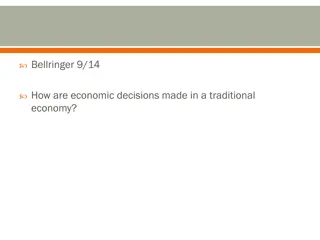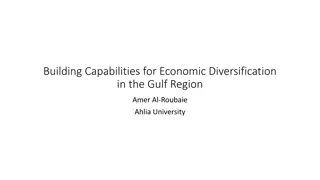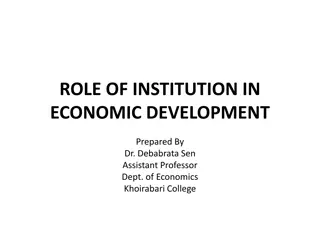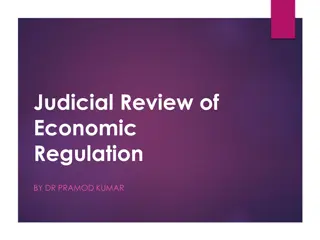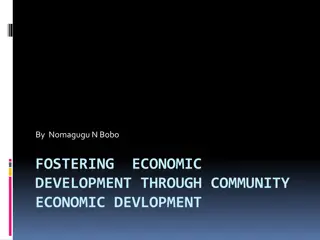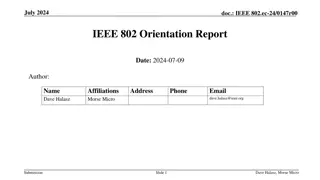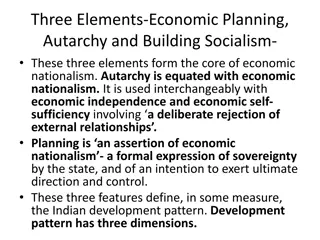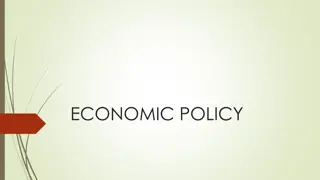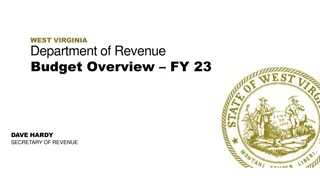
Nevada Labor Market Overview August 2020
The labor market conditions in Nevada were significantly impacted by the COVID-19 pandemic, with total employment at 1,289,800 in August. Non-farm job levels decreased by 133,600 or 9.4% over the year. Various sectors experienced changes, with leisure and hospitality being heavily affected. The policy responses continue to shape the state's employment landscape, showcasing both declines and rebounds in employment levels.
Download Presentation

Please find below an Image/Link to download the presentation.
The content on the website is provided AS IS for your information and personal use only. It may not be sold, licensed, or shared on other websites without obtaining consent from the author. If you encounter any issues during the download, it is possible that the publisher has removed the file from their server.
You are allowed to download the files provided on this website for personal or commercial use, subject to the condition that they are used lawfully. All files are the property of their respective owners.
The content on the website is provided AS IS for your information and personal use only. It may not be sold, licensed, or shared on other websites without obtaining consent from the author.
E N D
Presentation Transcript
Economic Overview Summary of Labor Market Conditions and Outlook Department of Employment, Training, & Rehabilitation Elisa Cafferata, Director David Schmidt, Chief Economist Christopher Robison, Supervising Economist Prepared by the Research and Analysis Bureau
State Employment Total Employment of 1,289,800 in August (SA1) Non-farm Job Levels Down 133,6001 or 9.4% Over the Year Up 6,500 Jobs Over the Month The policy response to the COVID-19 pandemic continues to significantly affect Nevada s labor market. The initial wave of shutdowns drove a decline and rebound in employment unprecedented in both speed and scale. 1 seasonally adjusted 2 not seasonally adjusted
State Employment Nevada Non-Seasonally Adjusted CES Sector Summary Annual Growth Rate Percent of Employment August 2020 Monthly Change Annual Change Series Maximum Total nonfarm 1,289,000 10,900 132,100 9.3% 1,438,100 100.0% Super Sectors Mining and logging 16,300 100 1,400 9.4% 16,300 1.3% Construction 93,200 2,700 5,100 5.2% 148,800 7.2% Manufacturing 57,500 1,600 2,100 3.5% 59,700 4.5% Trade, transportation, and utilities 236,900 4,700 24,600 9.4% 270,200 18.4% Information 13,500 100 2,100 13.5% 21,500 1.0% Financial activities 69,400 1,300 0 0.0% 70,900 5.4% Professional and business services 171,600 2,700 24,900 12.7% 203,700 13.3% Education and health services 138,200 2,600 7,000 4.8% 146,200 10.7% Leisure and hospitality 303,300 2,300 55,000 15.4% 360,300 23.5% Other services 37,600 2,400 4,800 11.3% 42,700 2.9% Government 151,500 3,800 7,900 5.0% 170,800 11.8%
State Employment Las Vegas CES Sector Summary Current Employment Monthly Change Annual Change Annual Growth Rate Percent of Employment Series Maximum Total nonfarm 908,500 8,600 126,300 12.2% 1,050,900 100.0% Super Sectors Mining and logging 600 0 100 20.0% 700 0.1% Construction 68,800 1,900 2,300 3.2% 112,000 7.6% Manufacturing 24,500 1,300 1,400 5.4% 27,700 2.7% Trade, transportation, and utilities 167,300 5,300 17,000 9.2% 190,800 18.4% Information 9,400 0 2,000 17.5% 15,700 1.0% Financial activities 54,800 700 700 1.3% 55,200 6.0% Professional and business services 130,400 3,600 21,400 14.1% 153,500 14.4% Education and health services 99,900 3,900 5,900 5.6% 106,200 11.0% Leisure and hospitality 221,400 3,500 72,600 24.7% 297,500 24.4% Other services 27,600 600 4,700 14.6% 32,900 3.0% Government 103,800 1,200 200 0.2% 110,400 11.4%
State Employment Las Vegas CES Sector Summary Current Employment Monthly Change Annual Change Annual Growth Rate Percent of Employment Series Maximum Total nonfarm 908,500 8,600 126,300 12.2% 1,050,900 100.0% Super Sectors Mining and logging 600 0 100 20.0% 700 0.1% Construction 68,800 1,900 2,300 3.2% 112,000 7.6% Manufacturing 24,500 1,300 1,400 5.4% 27,700 2.7% Trade, transportation, and utilities 167,300 5,300 17,000 9.2% 190,800 18.4% Information 9,400 0 2,000 17.5% 15,700 1.0% Financial activities 54,800 700 700 1.3% 55,200 6.0% Professional and business services 130,400 3,600 21,400 14.1% 153,500 14.4% Education and health services 99,900 3,900 5,900 5.6% 106,200 11.0% Leisure and hospitality 221,400 3,500 72,600 24.7% 297,500 24.4% Other services 27,600 600 4,700 14.6% 32,900 3.0% Government 103,800 1,200 200 0.2% 110,400 11.4%
State Unemployment Non-Adjusted Unemployment Rates LAUS Monthly Change August 2020 July 2020 August 2019 Yearly Change Nevada 13.3 14.3 1.0 3.9 9.4 Metropolitan Statistical Areas Carson City MSA 7.3 8.1 0.8 3.6 3.7 Las Vegas - Paradise MSA 15.5 16.6 1.1 4.1 11.4 Reno - Sparks MSA 7.2 8.2 1.0 3.1 4.1 Combined Statistical Areas Reno-Carson City- Fernley, Nv Combined Statistical Area 7.3 8.2 0.9 3.3 4.0
State Unemployment Non-Adjusted Unemployment Rates LAUS Monthly Change Yearly Change August 2020 July 2020 August 2019 Counties Churchill County Clark County Douglas County Elko County Esmeralda County Eureka County Humboldt County Lander County Lincoln County Lyon County Mineral County Nye County Pershing County Storey County Washoe County 5.3 15.5 7.3 4.7 4.3 3.9 4.8 4.3 5.0 8.0 6.0 9.6 4.8 7.7 7.2 5.8 16.6 8.1 5.1 3.8 4.2 5.1 4.6 5.0 8.4 6.0 9.9 4.6 8.7 8.2 0.5 1.1 0.8 0.4 0.5 0.3 0.3 0.3 0.0 0.4 0.0 0.3 0.2 1.0 1.0 3.5 4.1 3.6 2.8 3.8 2.7 3.1 3.0 3.7 4.5 3.6 5.0 3.5 3.4 3.1 1.8 11.4 3.7 1.9 0.5 1.2 1.7 1.3 1.3 3.5 2.4 4.6 1.3 4.3 4.1 White Pine County 4.2 4.0 0.2 2.8 1.4 Carson City 7.3 8.1 0.8 3.6 3.7
Economic Outlook Nevada s economic recovery depends on the recovery from COVID-19 and the speed of the economic rebound. So far, significant federal funds have been made available to help replace lost wages and spending, blunting a potential negative feedback loop. Federal UI programs expire at the end of 2020 these programs will support a rapidly- increasing share of UI claimants as we move more than 6 months out from the March/April surge in UI applications. Due to the focused impact on the service sector and in Leisure & Hospitality in particular, the recovery depends in large part on the practical timeline to restore tourism and visitation, which depends on both desire to travel, perceptions of safety, and overall demand.
For Additional Information, Please Contact: Nevada Department of Employment, Training and Rehabilitation Research and Analysis Bureau David Schmidt Chief Economist deschmidt@nvdetr.org Christopher Robison Supervising Economist c-robison@nvdetr.org (775) 684-0450 http://www.nevadaworkforce.com

